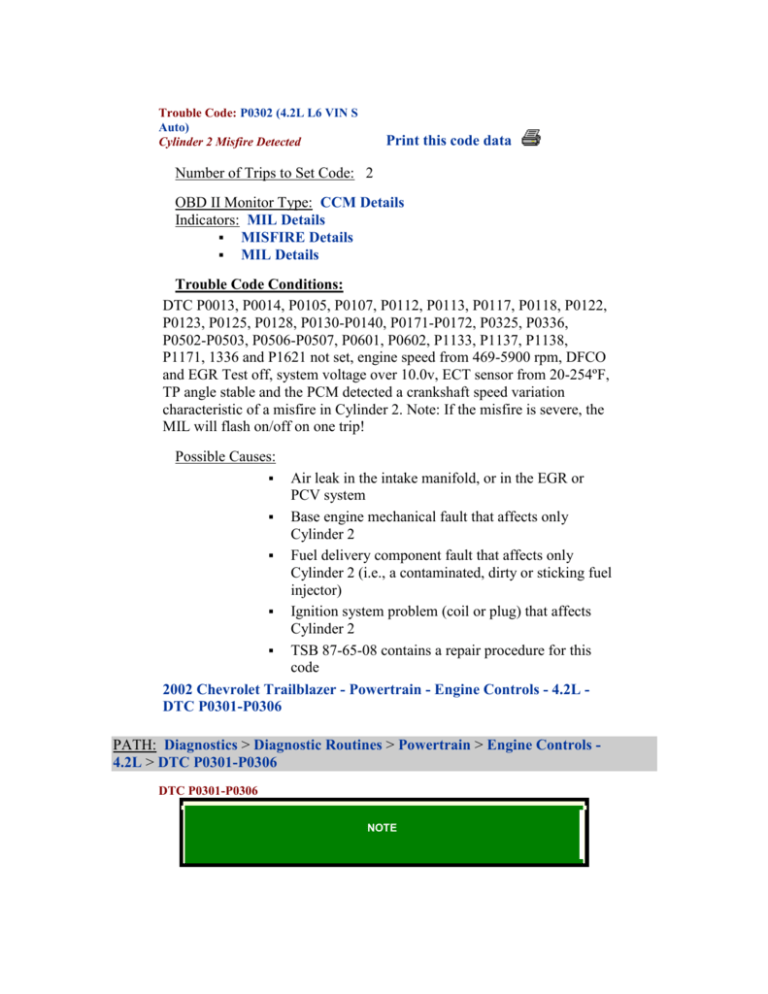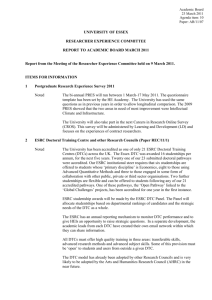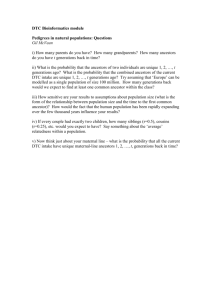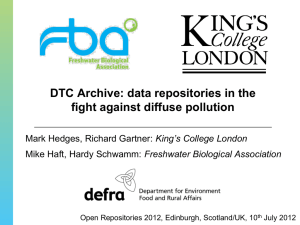Cylinder 2 Misfire Detected
advertisement

Trouble Code: P0302 (4.2L L6 VIN S Auto) Cylinder 2 Misfire Detected Print this code data Number of Trips to Set Code: 2 OBD II Monitor Type: CCM Details Indicators: MIL Details MISFIRE Details MIL Details Trouble Code Conditions: DTC P0013, P0014, P0105, P0107, P0112, P0113, P0117, P0118, P0122, P0123, P0125, P0128, P0130-P0140, P0171-P0172, P0325, P0336, P0502-P0503, P0506-P0507, P0601, P0602, P1133, P1137, P1138, P1171, 1336 and P1621 not set, engine speed from 469-5900 rpm, DFCO and EGR Test off, system voltage over 10.0v, ECT sensor from 20-254ºF, TP angle stable and the PCM detected a crankshaft speed variation characteristic of a misfire in Cylinder 2. Note: If the misfire is severe, the MIL will flash on/off on one trip! Possible Causes: Air leak in the intake manifold, or in the EGR or PCV system Base engine mechanical fault that affects only Cylinder 2 Fuel delivery component fault that affects only Cylinder 2 (i.e., a contaminated, dirty or sticking fuel injector) Ignition system problem (coil or plug) that affects Cylinder 2 TSB 87-65-08 contains a repair procedure for this code 2002 Chevrolet Trailblazer - Powertrain - Engine Controls - 4.2L DTC P0301-P0306 PATH: Diagnostics > Diagnostic Routines > Powertrain > Engine Controls 4.2L > DTC P0301-P0306 DTC P0301-P0306 NOTE Applicable vehicles: Bravada, Envoy, TrailBlazer (VIN S/T) DTC P0301-P0306 Circuit Description The powertrain control module (PCM) uses information from the crankshaft position (CKP) sensor and the camshaft position (CMP) sensor in order to determine when an engine misfire is occurring. By monitoring variations in the crankshaft rotation speed for each cylinder, the PCM is able to detect individual misfire events. DTCs P0301 through P0306 correspond to cylinders 1 through 6. If the PCM is able to determine that a specific cylinder is misfiring, the diagnostic trouble code (DTC) for that cylinder will set. If the misfire is random and on multiple cylinders, DTC P0300 will set. A misfire rate that is high enough can cause three-way catalytic converter damage. The malfunction indicator lamp (MIL) will flash ON and OFF when the conditions for catalytic converter damage are present. Conditions for Running the DTC DTCs P0013, P0014, P0105, P0107, P0108, P0117, P0118, P0122, P0123, P0125, P0128, P0217, P0218, P0336, P0340, P0341, P0365, P0366, P0502, P0503, P1114, P1115, P1121, P1122, P1336, and P1345 are not set. The engine is running. The system voltage is 10-18 volts. The engine coolant temperature (ECT) is 7-130°C (19-266°F). The throttle angle is steady. The A/C compressor clutch is not changing state. The exhaust gas recirculation (EGR) flow test is inactive. The fuel level is above 10 percent. The fuel cut-off or decel fuel cut-off (DFCO) mode is not active. Conditions for Setting the DTC The PCM determines that an emission type misfire is present. The PCM determines that a catalyst damaging misfire is present. Action Taken When the DTC Sets If the misfire level is non-catalyst damaging, the PCM will illuminate the MIL during the second key cycle in which the DTC sets. If the misfire is severe enough to cause possible catalyst damage, the PCM will immediately flash the MIL while the misfire remains at catalyst damaging levels. The PCM will disable the torque converter clutch (TCC) operation. The PCM will store the conditions present when the DTC set as Freeze Frame/Failure Records data. Any data previously stored in Freeze Frame will be overwritten when this DTC sets. The only exception to this is if a fuel trim DTC was already recorded in Freeze Frame. In this case, the fuel trim data stays in Freeze Frame and the Misfire Data will be stored in Failure Records. Conditions for Clearing the MIL/DTC The PCM will turn the MIL OFF after three consecutive trips during which the diagnostic runs and passes. Note that if the last failure was during a non-typical driving condition, the MIL may remain ON longer than three drive trips. Review Freeze Frame for the last failure conditions. The History DTC will clear after 40 consecutive warm-up cycles have occurred without a malfunction. The DTC can be cleared by using the scan tool Clear DTC Information function. Diagnostic Aids Check for the following conditions: Incorrect CKP system variation data stored in the PCM--Run the Crankshaft Position System Variation Learn using the scan tool. System grounds--Ensure that all connections are clean and properly tightened. Damaged accessory drive belt or driven accessory--A damaged serpentine belt or belt driven accessory can cause engine load variations sufficient to set a misfire DTC. Fuel pressure--Perform a fuel system pressure test. A malfunctioning fuel pump, plugged filter, or malfunctioning fuel system pressure regulator will contribute to a lean condition. Refer to Fuel System Diagnosis . Fuel injectors--Refer to Fuel Injector Solenoid Coil Test . Contaminated fuel--Refer to Alcohol/Contaminantsin-Fuel Diagnosis . Extended idle--Excessive Open Loop operation caused by extended idling or short trip driving may leave deposits on the heated oxygen sensors (HO2S). The deposits cause oxygen sensors to respond slowly to exhaust oxygen content, affecting fuel control and causing a misfire to be indicated at idle. This condition is not permanent. To determine if this condition is causing the DTC P0300 to be set, review the Freeze Frame/Failure Records data for DTC P0300. If the DTC P0300 occurs at high engine speeds, the condition described above did not cause the DTC P0300 to set. If the DTC P0300 occurs at idle or very low engine speeds and at engine coolant temperatures below 80°C (176°F), the condition described above is very likely the cause of the DTC P0300 being set. The deposits on the heated oxygen sensors can be eliminated by operating the vehicle fully warm at mass air flows above 15 g/s. Running the vehicle low on fuel--This DTC may set if the vehicle misfires while running out of fuel. If no misfire is currently present, but the History Counters indicate random misfire was once present, ask if the vehicle has been run out of fuel. If this is the case, no further repair may be necessary. WARNING Important: If the level of misfire was sufficient to cause possible catalyst damage (if the MIL was flashing), ensure that the DTC P0420 test is completed and passed after verifying the misfire repair. If the condition is intermittent, refer to Intermittent Conditions . Test Description The numbers below refer to the step numbers on the diagnostic table. 2. DTCs that may cause a misfire DTC to set may include those for injector control circuits, oxygen sensors, the evaporative emission (EVAP) system, or fuel trim. 7. This test is to determine if there is a problem in the heated oxygen sensor (HO2S) or wiring that is causing the PCM to alter the fuel trim. When the sensors are disconnected, the fuel system should go into Open Loop. If the misfire counters stop incrementing, perform the HO2S diagnosis for sensor 1. Step Action Did you perform the Diagnostic System CheckEngine Controls? Yes 1 Go to Step 2 2 3 4 Check for other DTCs that may cause a misfire. Did you find any other DTCs? No Go to Diagnostic System Check Engine Controls Go to Diagnostic Trouble Code (DTC) Go to Step 3 List 1. Connect the scan tool. 2. Start the engine. 3. Allow the engine to idle or operate within the conditions listed in the Freeze Frame records. 4. Using the scan tool, monitor the Misfire Current Counter for this cylinder. Is the Misfire Current Counter incrementing? Go to Step 4 Go to Diagnostic Aids Inspect the following items: The vacuum hoses for splits, kinks and proper connections The throttle body and the intake manifold for Go to Step 8 Go to Step 5 Step 5 6 7 Action vacuum leaks The crankcase ventilation valve and/or system for vacuum leaks Ensure that the PCM grounds are clean and secure. Did you find and correct the condition? Yes No 1. Perform the Fuel Injector Balance Test with Tech 2 and the Fuel Injector Solenoid Coil Test on the affected cylinder. 2. Repair as necessary. Did you find and correct the condition? Go to Step 8 Go to Step 6 1. Perform the Ignition System Check on the affected cylinder. Refer to Electronic Ignition (EI) System Diagnosis . 2. Repair as necessary. Did you find and correct the condition? Go to Step 8 Go to Step 7 1. Turn OFF the ignition. 2. Disconnect the HO2S 1 connector. 3. Start the engine and allow the engine to idle. 4. Using the scan tool, monitor the Misfire Current Counter for this cylinder. Is the Misfire Current Counter Go to Symptoms Engine Mechanical in Engine Go to DTC Mechanical P0130 Step Action Yes No 1. Use a scan tool to clear the DTCs. 2. Turn OFF the ignition for 30 seconds. 3. Start the engine. 4. Operate the vehicle within the Conditions for Running the DTC as specified in the supporting text. Does the DTC run and pass? Go to Step 9 Go to Step 2 Go to Diagnostic Trouble Code (DTC) List System OK incrementing? 8 9 With a scan tool, observe the stored information, Capture Info. Does the scan tool display any DTCs that you have not diagnosed?








